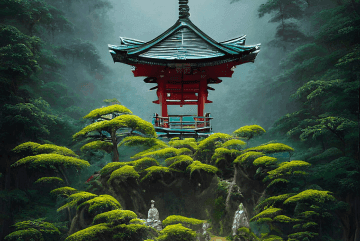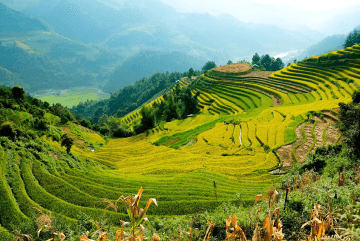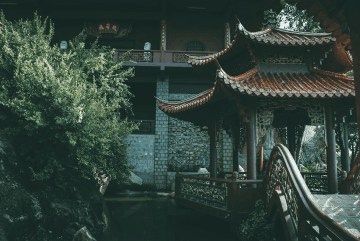History of Sri Lanka

The history of Sri Lanka is a story of a melting pot of cultures, religions and colonists, set amidst a lush and wild backdrop. This large island off the coast India, strategically located on the old maritime trade routes has always been a trading, religious and cultural crossroad. Throughout the years, Sri Lanka has forged a unique identity, marked by influences from its incredibly turbulent history.
The origin of the name "Sri Lanka"
To learn about the history of Sri Lanka, let’s start with its name. Originally called Lanka, a word that simply means ‘island’, then ‘Taprobane’ by the Greeks, ‘Serendib’ by the Arabs, ‘Celao’ by the Portuguese, ‘Ceylan’ by the Dutch and ‘Ceylon’ by the British, it became a version of Lanka once again 1972. Joined with ‘Sri’, which means ‘resplendent’, the name Sri Lanka means ‘Resplendent Island’. Admired for its various riches, its gems, its spices including the famous cinnamon, and its elephants, Sri Lanka has attracted merchants for a millennium. This region is the fruit of ethnic and cultural mixing, beyond the conflicts that have divided the country forever.
History of Sri Lanka
Let's quickly take a tour of the rich history of Sri Lanka whose remnants are still visible in crumbling temples and forts even now..
According to the sacred texts, the history of Sri Lanka began when the Sinhalese (of Sinha: lion) of Indo-Aryan origin left North India in the 5th century BC to settle on the island. These Sinhalas were headed by Prince Vijaya and landed on the west coast of the island. It is believed that the Tamils of Dravidian origin were probably the later immigrants, arriving from central, eastern and southern India from about the 3rd century BC to around 1200 AD.
Conflicts with India
In the 3rd century, Mahinda, the son of Ashoka, an Indian emperor converted to Buddhism and arrived in Sri Lanka with some monks to preach the teachings of the Buddha. Upon their arrival, his sister, Sangamitta, planted a ficus sapling from the sacred tree under which Buddha reached enlightenment in India. It is this tree that is venerated in Anuradhapura.
In the 4th century, Anuradhapura became the first capital of the Sinhalese kingdoms - a turning point for the history of Sri Lanka. During its reign until the 10th century, the city was often damaged by the incessant conflicts with South India, although many well-preserved ruins still survive; nowadays, Anuradhapura is a UNESCO World Heritage Site. Following the rivalries with the Tamils, Sinhalese supremacy eventually prevailed. The Buddhist doctrine began to spread, monuments and temples were built and vast reservoirs were dug for irrigation. As Buddhism collapsed in India, Ceylon became one of the countries where this culture still persists.
Faced with heavy Tamil pressure, the Sinhalese capitals gradually slipped towards the south of the country, first to Polonnaruwa in the 11th century and then to Kandy from the starting of the 13th century.
European presence and civil war
The Portuguese landed in Sri Lanka in 1505, followed by the Dutch, a century later. The British took control of the island from 1796 until its independence in 1948. Under British occupation, the country entered a new era: the governors sent from London set up an administration, constructed roads and railways, and developed the coffee cultivation before the tea plantation, which later became the main economic resource of the country. Tamil workers in South India flocked to Sri Lanka's central regions to work in tea plantations.
From 1983, the country sank into inter-ethnic violence between Sinhalese and Tamils. The conflict between the Sri Lankan government and the Liberation Tigers of Tamil Eelam (LTTE) movement lasted 25 years until President Rajapakse put an end to the civil war in 2009. The northern and eastern parts of the country were the witness of these bloody clashes which have left their mark on the history of Sri Lanka.
In 2004, Sri Lanka was deeply affected by the devastating tsunami that resulted from the Indian Ocean earthquake on December 26, 2004. More than 30,000 people died along its south and east coasts, which were the worst hit.
Back to stability
Today, after a turbulent and difficult history, Sri Lanka has regained its stability and is rebuilding rapidly. The country is experiencing a real economic boom, particularly in the tourism sector. It enjoys privileged relations with both China and India and holds an important place in the regional economy.
With 8 UNESCO World Heritage Sites, beautiful beaches and abundant wildlife, this “Resplendent Island” is truly a fabulous destination, with plenty of opportunities to discover the hidden history of Sri Lanka.
Travel differently, travel better
Subscribe and receive our travel inspirations and practical advice twice a month.

Wanting to share your trip with a group?


















































